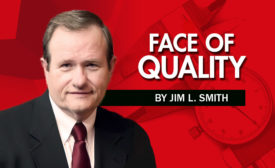Articles by Jim L. Smith
Pursuit of Excellence
The continuous pursuit of excellence typically wins the race.
October 1, 2018
Soft Skills are Underrated
Quality professionals need strong interpersonal skills.
September 1, 2018
Organizational Excellence in Quality Management
The basic element is people who care.
August 1, 2018
The Effects of Automation
Modernization creates more jobs than it eliminates.
July 1, 2018
Stay in the know with Quality’s comprehensive coverage of
the manufacturing and metrology industries.
eNewsletter | Website | eMagazine
JOIN TODAY!Copyright ©2025. All Rights Reserved BNP Media.
Design, CMS, Hosting & Web Development :: ePublishing


